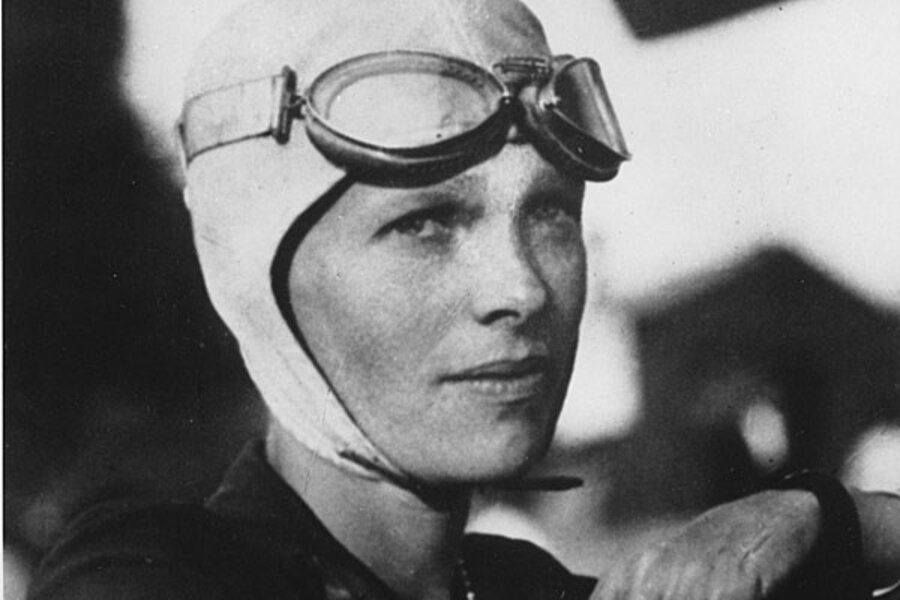Amelia Earhart: Her plane was found in 2010, says lawsuit
Loading...
| Cheyenne, Wyo.
A Delaware aircraft preservation group denies a Wyoming man's claim that it found pioneering aviator Amelia Earhart's missing plane in 2010 but sat on the news so it could solicit him to pay for a later search.
Mystery has surrounded Earhart's fate since her plane disappeared in 1937 in the South Pacific. Earhart was the first woman to fly across the Atlantic Ocean in 1932, but many experts believe she crashed into the Pacific a few years later while trying to establish a record as the first woman to fly around the world.
Timothy Mellon, son of the late philanthropist Paul Mellon, filed a federal lawsuit in Wyoming last week against The International Group for Historic Aircraft Recovery and Richard E. Gillespie, the group's executive director. Mellon, who lives in Riverside, Wyo., claims the group solicited $1 million from him last year without telling him it had found Earhart's plane in its underwater search two years earlier.
Mellon's lawsuit says the 2010 search in the waters around the Kiribati atoll of Nikumaroro, about 1,800 miles south of Hawaii, captured underwater images of the "wreckage of the Lockheed Electra flown by Amelia Earhart when she disappeared in 1937."
The suit claims the aircraft recovery group intentionally misrepresented the status of its exploration to Mellon last year, telling him a discovery of Earhart's plane was yet possible if he supported the search. The lawsuit states Mellon contributed stock worth more than $1 million to the 2012 search and accuses the organization of engaging in a pattern of racketeering to defraud him.
Tim Stubson, a Casper lawyer representing Mellon, said Monday that he has viewed the images from the 2010 search that the lawsuit maintains show the wreckage of Earhart's plane.
"As a layman, it is hard to see, unless you know what you're looking at it," Stubson said of the footage, which he said he couldn't share. "Much of it relates to the landing gear and parts that are unique to the landing gear."
Stubson said Mellon engaged experts to examine the underwater images against parts they knew were unique to the Earhart aircraft. He said they reached a "definitive conclusion that that is in fact the wreckage, and it had been discovered two years before our client paid for another expedition."
Stubson acknowledged that the aircraft preservation group might have had more to gain by publicizing a true discovery of the Earhart wreckage. But he noted: "For whatever reason they didn't do that in this case, and they continue to solicit funds under the pretense that they have not found it."
Bill Carter, a lawyer in Boise, Idaho, represents the group, known as TIGHAR, and was a team member on the 2010 Earhart search mission. He said Monday the organization strongly denies Mellon's claim that it found the plane. He said it is raising funds for another search that could occur as soon as the end of next year.
"TIGHAR does not possess any definitive evidence as to the whereabouts of Earhart's Lockheed Electra, and did not conclusively make any discoveries in 2010 which it's withheld," Carter said. "All of its information and its research is compiled and available for public viewing on its website."
Carter said he respects Mellon's opinion but isn't aware of any videographic or forensic expert who has validated his conclusions.
"I have looked at some of the underwater imagery that he's referring to. I was, in fact, present during the 2010 expedition when that imagery was taken," he said. "And I can just tell you that I don't see any of the things that Tim sees in those images."
Carter said he's been a member of the group for 17 years and sits on its board of directors. He said he's been involved in the Earhart search for at least that long.
"I would tell you that there is no financial gain for us in hiding the discovery of the most famous missing aviator in the history of aviation," Carter said. "Just the opposite; we would want to publicize the finding to ensure that we can protect it adequately."
Copyright 2013 The Associated Press.





